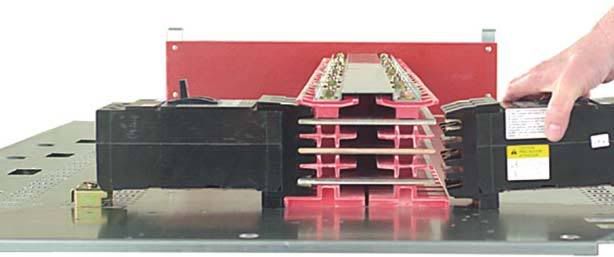ibew441dc
Senior Member
408.3(E) is pretty clear in pointing out phase arrangements. Front to back, top to bottom, left to right.
Although I do not see this as a violation , If a set of bus bars are arranged front to back (vertically) . The breakers on the right would be arranged
A
B
C
the breakers on the right are
C
B
A
Personnaly I do not like this style of switchboard or panelboard. Although the buses are arranged in a code compliant manner , I am not sure if I if the right side is possibly a violation.
C
B
A
Does this arrangement violate 408.3(E) At first I thought it did, but now I'm not sure.
Any feedback would be great.
ibew441dc
Although I do not see this as a violation , If a set of bus bars are arranged front to back (vertically) . The breakers on the right would be arranged
A
B
C
the breakers on the right are
C
B
A
Personnaly I do not like this style of switchboard or panelboard. Although the buses are arranged in a code compliant manner , I am not sure if I if the right side is possibly a violation.
C
B
A
Does this arrangement violate 408.3(E) At first I thought it did, but now I'm not sure.
Any feedback would be great.
ibew441dc


